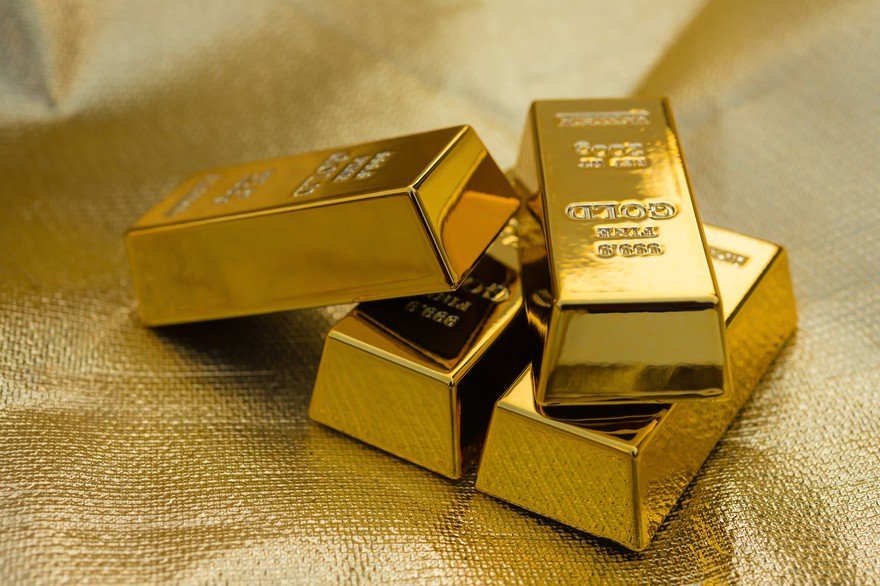Gold exchange-traded funds (ETFs) are one of many means of investing in gold. They're an easy way to gain instant exposure to the gold market. That ease makes gold ETFs ideal for anyone seeking to invest in gold.

Exchange-Traded Fund (ETF)
Gold ETFs fall into two basic categories:
- Those that own physical gold.
- Those that own gold mining stocks.
Here's a closer look at the top gold ETF options.
What to look for in the best gold ETFs
What to look for in the best gold ETFs
Investors considering an ETF focused on gold should look for the following characteristics:
- Large size: The ETF should have at least $200 million of assets under management (AUM). A larger size makes the ETF less likely to fall prey to market manipulation or trade at a significant premium to its net asset value.
- Reasonable expense ratio: Look for an expense ratio less than 1%. Any expense ratio more than 1.5% is considered excessive.
- Non-leveraged ETFs: A leveraged ETF borrows money or uses derivatives such as options and futures contracts to magnify its returns. These carry much higher risk. Leverage in a down market can magnify losses.
With those criteria in mind, here are some of the best gold ETFs:
Assets Under Management (AUM)
Top gold ETFs
Top gold ETFs
The best gold ETFs are:
| Gold ETF | Ticker Symbol | Assets Under Management | Expense Ratio |
|---|---|---|---|
| SPDR Gold Shares | (NYSEMKT:GLD) | $58.5 billion | 0.40% |
| iShares Gold Trust | (NYSEMKT:IAU) | $28.5 billion | 0.25% |
| VanEck Vectors Gold Miners ETF | (NYSEMKT:GDX) | $12.7 billion | 0.51% |
| VanEck Vectors Junior Gold Miners ETF | (NYSEMKT:GDXJ) | $4.0 billion | 0.52% |
| SPDR Gold MiniShares Trust | (NYSEMKT:GLDM) | $6.3 billion | 0.10% |
Here's a closer look at each of these top gold ETFs:
1. SPDR Gold Shares
1. SPDR Gold Shares
The largest and most liquid gold ETF is SPDR Gold Shares. It's the standard for investors seeking direct exposure to the price of the yellow metal. The ETF's sole asset is gold bullion, which it stores in secure vaults.
Investors pay a premium for this particular gold ETF. It has a higher expense ratio than other ETFs that own physical gold bullion.
However, it's still relatively cheaper than the cost of shipping, insuring, and storing gold bars and coins, especially when you factor in its liquidity. Its large size makes it a favorite of institutional investors, such as pension funds that use it to hedge against inflation and other risk factors.
2. iShares Gold Trust
2. iShares Gold Trust
iShares Gold Trust is almost identical to SPDR Gold Shares, making it another great means of investing directly in gold. It boasts a lower expense ratio than its larger rival, making it an even lower-cost way to gain upside exposure to the price of gold.
Owning shares in this ETF is a great proxy for owning physical gold without the hassle and expense of storing or insuring bars and coins. The ETF handles these items, storing its bullion in the London branch of JPMorgan Chase (JPM -1.39%). Overall, this gold ETF has done an excellent job of tracking the price of gold, with only a minor underperformance due to its expense ratio.
3. VanEck Vectors Gold Miners ETF
3. VanEck Vectors Gold Miners ETF
VanEck Vectors Gold Miners ETF is the largest ETF focused on holding shares of major gold mining stocks. That makes it the best gold ETF for those who want to invest in mining companies as a way to play the gold market.
Shares of mining companies can outperform the price of gold. They can benefit from the dual catalysts of production growth and a rising gold price. However, owning mining stocks is riskier than investing directly in gold. That's because cost inflation and other factors can cause underperformance.
As of mid-2023, the ETF held shares of more than 50 gold mining companies. Its top holdings included the largest gold mining companies in the world by market capitalization, led by the following five:
- Newmont (NEM -0.18%)
- Barrick Gold (GOLD -4.63%)
- Franco-Nevada (FNV 0.22%)
- Agnico Eagle Mines (AEM 1.21%)
- Gold Fields (GFI -0.11%)
The market cap of the largest mining company on this list is $33 billion, and the market cap of the smallest company is $13.5 billion. Overall, its top five holdings make up almost 40% of the gold ETF's assets, led by Newmont at almost 10%. That gives investors greater exposure to the world's largest gold mining companies, making the ETF ideal for investors seeking quality over quantity.
4. VanEck Vectors Junior Gold Miners ETF
4. VanEck Vectors Junior Gold Miners ETF
VanEck Vectors Junior Gold Miners ETF offers the most upside potential because it focuses on smaller mining companies, known as junior gold miners, some of which are still exploration-stage companies. These smaller miners could expand their production faster and deliver higher returns than their larger rivals.
However, the higher reward potential comes with more risk because they lack the scale of their larger rivals. A misstep such as cost overruns on a mine development could be costlier to investors.
VanEck Vectors Junior Gold Miners ETF is reasonably large and has a relatively low expense ratio. The gold ETF has almost 100 holdings. Its five largest are:
- Pan American Silver(PAAS -1.47%)
- Kinross Gold (KGC -0.39%)
- Alamos Gold (AGI 0.1%)
- Endeavour Mining (EDV 0.24%)
- B2gold (NYSE:BTG)
These mining companies are much smaller than most held by VanEck Vectors Gold Miners ETF. The largest holding on the list has a market cap of about $6 billion. The five largest holdings of the ETF make up about 25% of its assets, providing investors with broad exposure to several up-and-coming gold and silver mining stocks.
5. SPDR Gold MiniShares Trust
5. SPDR Gold MiniShares Trust
SPDR Gold MiniShares Trust is a lower-cost product launched by the same investment managers as SPDR Gold Shares ETF. The ETF was created for cost-conscious retail investors so they don't lose market share to rivals such as iShares Gold Trust. Its managers opted to create a new ETF rather than changing the highly successful (and lucrative) SPDR Gold Shares product favored by institutional investors. The gold ETF offers the same direct exposure to the price of gold since it also owns gold bullion, but at a lower cost.
The ETF is an ideal option for investors seeking the cheapest way to invest in gold without owning it directly. However, given its smaller size, it has less liquidity than larger gold ETFs. This factor could affect pricing during periods of market volatility. Nevertheless, it should do the best job of mirroring the price of gold over the long term since its ultralow expense ratio won't have much impact on returns, thanks to its lower costs.
Related investing topics
Finding the best gold ETF for your portfolio
Gold ETFs allow investors to speculate on gold prices without buying physical gold. The benefit of owning a gold mining company ETF over a gold price ETF is that it can generate higher returns.
Gold miners can use the cash flow they earn from producing gold to expand their production, make dividend payments, and repurchase shares. Those investments and shareholder returns position gold mining companies to potentially deliver total returns better than the price gains of gold.









